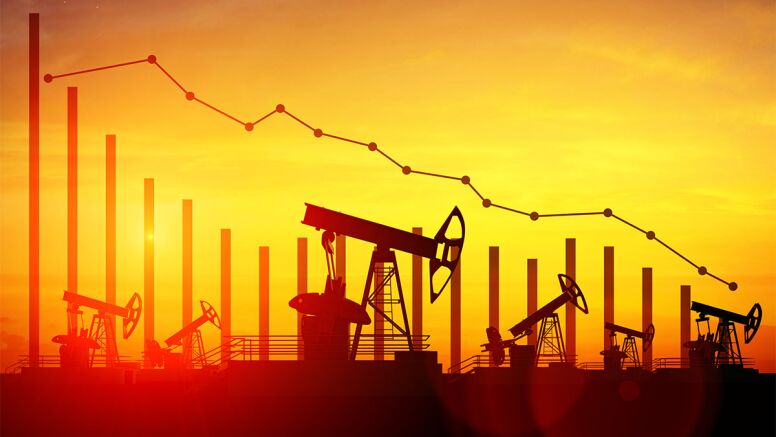By Madeline Pace
Stephen Arbogast, professor of the practice of finance at UNC Kenan-Flagler Business School, spent 32 years working at Exxon and now teaches the business of energy to MBA students each year. The Well sat down with Arbogast (over Zoom) to learn why oil prices dropped below zero for the first time in history in April 2020.
Q. Why did oil prices suddenly decrease as the COVID-19 pandemic spread?
A. There is an unprecedented amount of what we call demand destruction, which is when demand for oil products suddenly disappears. Industrial users across the globe have shut down. The decrease in people driving, using public transportation or flying also contributes to that decrease in demand. I’ve been involved in the oil industry since 1972, and we have never seen an incident in which — almost overnight — tens of millions of barrels a day of oil demand disappeared. In January, the world was consuming 100 million barrels of oil a day, and the best estimates for April would be something like 70 or 75 million barrels per day. There’s so much production with no place to go that people are renting tankers, filling them up with oil and parking them somewhere in the ocean.
Q. Why is there suddenly a lack of storage space for crude oil? Did that cause oil prices to go negative?
A. When demand collapses and production cannot respond as quickly, produced oil must go somewhere. That somewhere is storage. Storage capacity is usually sized for normal fluctuations in supply and demand. When demand collapses beyond expectations, storage fills up quickly. Right now there’s hardly any storage to be found onshore in the United States. Many people speculate on oil prices but never expect to actually take a physical delivery. What they expect to do is buy a contract to purchase oil sometime in the future and before the delivery date execute an opposite sale contract, reaping a profit in the process. Last month, suddenly everyone who had contracts to buy oil needed to get out of them but couldn’t.
The market was saturated, and there were no buyers left to take them out of their “long” position. Without executing an offsetting sale contract, these speculators would have had to receive a physical delivery. Unfortunately for them, there was no storage space available where they could put delivered oil. Ultimately, they had to pay people up to $40 dollars per barrel just to get out of their contracts. This produced an unprecedented event: The price of oil quoted for quick delivery went negative.
Q. Are companies still producing oil?
A. They are, because 75 million barrels a day are still being used. Oil companies are having to make decisions about which oil rigs they keep flowing and which to shut down so that, globally, supply comes into balance with the 75 million barrels a day still being used. Some companies are closing their platforms in the Gulf of Mexico, which is the kind of thing they usually do for hurricanes. This is a different kind of hurricane.
Q. Is this the first time an outbreak of disease has caused a depreciation of oil prices?
A. There have been a few other epidemics that spread around the world, like SARS, MERS and the swine flu, but their economic effect didn’t touch the oil industry on this level. Essentially, we are experiencing simultaneous lockdown of the entire industrial world and an absolute stop to international travel. The leisure industry, the service industry and commuting to work are all deeply impacted. No other virus had such an effect on the oil industry.
Q. Do you think oil prices will return to their pre-pandemic levels anytime soon?
A. This kind of forecast is the hardest to predict. One factor is how quickly COVID-19 restrictions will be lifted. Another is predicting how people will modify their behavior once those restrictions are gone. Will they still go to the movies? Will they go to a football game this fall? Much will be determined by progress on things that make people feel safer. When there are approved treatments, widely available testing and, ultimately, an effective vaccine, consumer and producer behaviors can normalize. That will take time, however, and in the meantime there will be widespread unemployment and cancelled investments. It will take years for oil demand to recover to January 2020 levels. Prices, however, may firm up sooner because much production is now shut, and it takes time to bring that production back. We could see oil prices above $30 per barrel by the year’s end and approaching $50 per barrel by the end of 2021.

